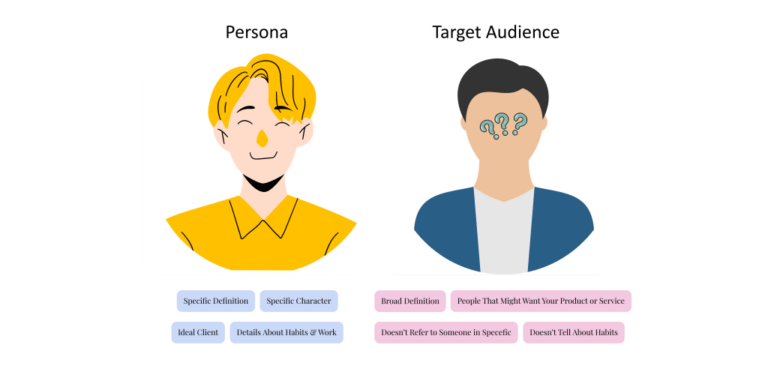- Blog
Utilising Data-Driven Insights to Enhance B2B Website User Experience
As complex digital ecosystems continue to evolve, businesses are upgrading their operational processes to foster internal growth. However, it’s crucial to ask: How often does your business consider unfolding emerging trends on its website? The rapid evolution of technology, consumer behaviour, and global markets necessitates forward-thinking from marketers.
The digital transformation landscape is all about taking a proactive approach to understand and leverage emerging trends. It’s time for your website to catch up!

Continuous Improvements in B2B Website User Experience
At the heart of this transformation is data-driven decision-making. Data is the main driving force behind strategic marketing initiatives today. Marketers no longer rely on historical trends but utilise data analytics to gain valuable insights into seasonal shifts and rising trends and analyse user behaviour patterns to boost the effectiveness of addressing user intent.
Understanding User Behaviour
Every single click and scroll of a B2B website interaction is intricate, as engagement holds value and shapes the trajectories of the big picture. The nuances of these interactions offer a glimpse into your target audience’s preferences, rationale and pain points.
B2B website interactions provide a wealth of data that can be analysed to gain a comprehensive understanding of your user behaviour. From the pages they visit most frequently to the actions they take before making a decision that generates a lead for you – each interaction paints a vivid picture of your audience’s journey through your website.
By analysing these patterns, you can uncover valuable insights into what resonates with your audience, what drives them to engage and what obstacles may hinder conversion.

Identifying Pain Points
Every interaction on your B2B website offers an opportunity to identify pain points and areas of improvement. Whether it’s a high bounce rate on a particular page or an unqualified lead, data insights derived from user interactions can pinpoint where your users are experiencing friction, communication anomalies, or dissatisfaction.
Armed with this knowledge, you can take proactive steps to address these pain points, streamline your user experience and enhance overall satisfaction.
It’s beneficial to create a buyer persona, a fictional representation of your ideal customer, to understand and empathise with potential customers on your site. A few ways to help derive these personas are by engaging with real customers who already use your site or by analysing data from surveys, feedback, testing, and analytics.
Your persona should include information such as:
- Background
- Goals
- Challenges
- Pain Points
- Needs
- Preferences
For in-depth segregation, here’s our free guide with a template for building your Customer Persona. This covers the three types of personas—Buyer, User, and Website—that help enhance the B2B website user experience.

Tailoring Content with Offerings
Distinct B2B website interactions are crucial in informed content strategy and product or service offerings. By analysing which content speaks the most with your audience or evokes their decision, you can tailor your messaging to better align with their interests and needs.
Similarly, insights derived from user interactions can inform product/service development, helping you to refine existing offerings or introduce solutions that address specific pain points through user engagement.
Optimising User Journeys
By mapping out the typical path users take through your website and analysing where they may encounter obstacles or detours, you can optimise navigation and streamline their user experience. Data-driven insights can help identify opportunities to remove friction points, simplify processes and guide users seamlessly from discovery to conversion.

Driving Conversion and Retention
Ultimately, the insights from B2B website interactions are invaluable for driving conversion for long-term customer retention. By understanding what motivates your users to take action and what keeps them returning for more, you can fine-tune your website to better meet their expectations. Whether through personal recommendations, targeted messaging or streamlined workflow, data-driven insights empower personalisation strategies for B2B website user experience. This enables delighting customers and building loyalty over time.
With a well-rounded tactical user pathway, data insights derived from these interactions can open up every aspect of your website, leading to more meaningful engagement and, ultimately, achieving your business goals and richer prospects.

Data-Driven Strategies - Boosting B2B Website ROI
Wondering what’s next?
After attaining data-driven insights from B2B interactions, the journey towards enhancing user experience enters a phase of actionable improvements. To further improve the B2B website user experience, strategic enhancements that affect ROI are extracted.
Iterative Optimisation
This involves continuously analysing your user behaviour and engagement metrics to identify areas for improvement on your website. Subject to your product or service, it includes actions such as streamlining the checkout process, modifying an intricate multi-step client form, refining services/product descriptions, and augmenting navigation.
Incremental improvements over time to maximise user satisfaction and conversion rates are key. At the early stages of the website optimisation journey, free tools can help in achieving iterative growth for online presence.
If you have already implemented tools such as Google Search Console, Google Page Speed Insights (PSI), Yoast SEO for WordPress, and Google Analytics 4 (GA4), consider using them to further explore optimisation to manoeuvre user behaviours.
Check out Google Tag Manager, WebPageTest, SEMrush Site Audit and Hotjar.
Responsive Design and Accessibility
With the proliferation of devices and platforms, ensuring your B2B website is optimised for responsiveness and accessibility becomes vital. Data insights can help you understand which devices your audience prefers, allowing you to prioritise optimisation efforts accordingly. By offering an uninterrupted browsing experience regardless of device, you can cater to your audience’s diverse needs, facilitating thoughtful engagement.
Excellent UX delights users and acts as a major contributor to enhanced conversions. While UX optimization tools won’t automatically enhance user experience, usability testing can help understand user behaviour. It helps diagnose issues, optimise pages, and provide what users need to continue browsing and purchasing from your site.
UX tools, such as UserTesting, Trymata formerly known as TryMyUI, Adobe Analytics and Lyssna a.k.a UsabilityHub assist with every stage of the page optimization process, helping identify where users encounter difficulties in conducting user research.

Conversion Rate Optimisation (CRO)
CRO focuses on optimising conversion funnels to maximise conversion rates. By analysing user interactions at each stage of the conversion process, you can identify bottlenecks that create blocks in your conversion process. Techniques such as A/B testing, user journey mapping and targeted interventions can help drive meaningful outcomes from the conversion process.
Users can be divided into three sections of the funnel: the bottom of the funnel (BoFu) represents the Action Stage, the middle (MoFu) speaks to the Interest and Desire Stage, and the top (ToFu) caters to the Attention Stage.
Some of the most popular CRO tools in 2024 are VWO, Matomo, Hello Bar and Omniconvert.

Measurement and Analytics
Establishing robust measurement frameworks allows you to track the impact of user improvements on key performance indicators (KPIs) such as conversion rates, average order value and customer lifetime value. By closely monitoring these metrics, you can quantify the ROI of your user experience initiatives and make data-driven decisions to allocate resources effectively.
An Underrated Advantage - Feedback and Engagement
Engaging with your B2B clientele through surveys, feedback forms, and social listening enables you to gather qualitative insights into their experiences and preferences.
Incorporating this feedback into your optimisation efforts ensures they align with your audience’s evolving needs and expectations. By demonstrating responsiveness to customer feedback, you can foster loyalty and advocacy, driving long-term ROI.
Until next time!
The ability to act on the power of data-driven insights is not just a competitive advantage – it’s a strategic imperative for B2B decision-makers. As we navigate the ever-evolving demands of the modern marketplace, it’s essential to acknowledge that the true measure of long-term success lies in forging meaningful connections with your audiences digitally.
By prioritising user experience we have the opportunity to redefine the very essence of what it means to do business in the digital age. With insights and innovation, chart a course towards a future where every interaction is an opportunity to create value and inspire lasting loyalty.
